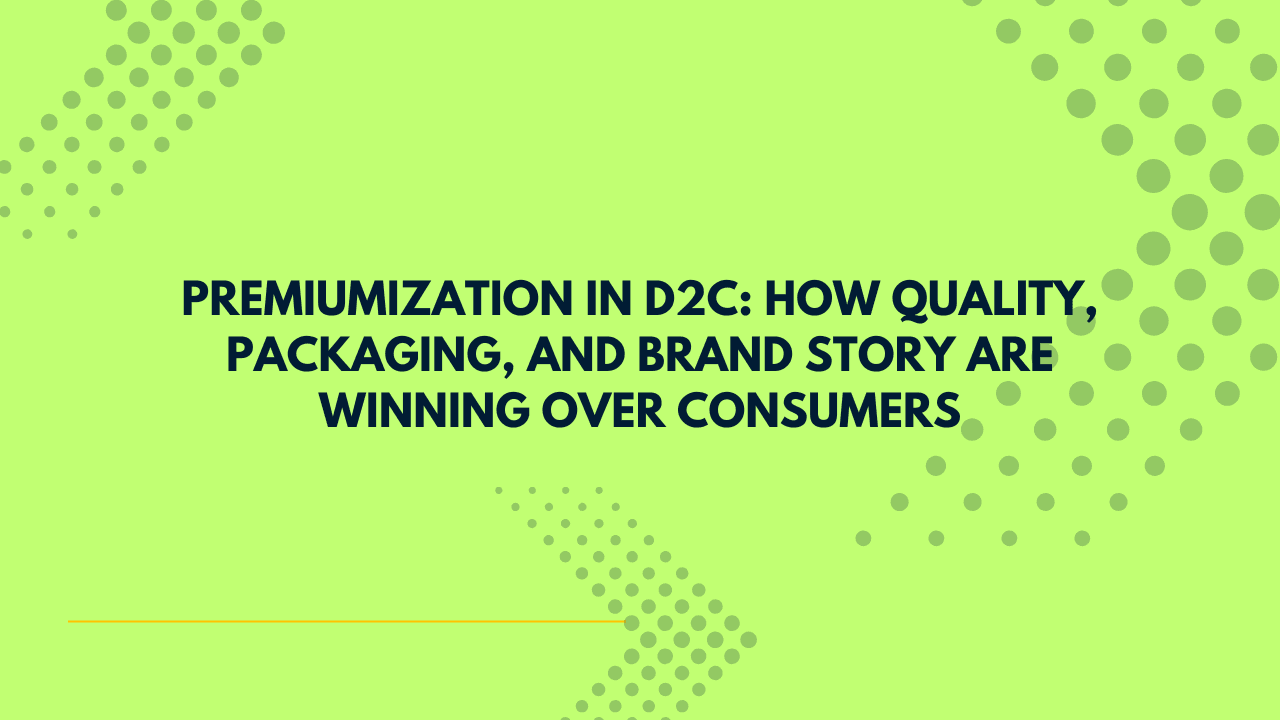Premiumization in D2C: How Quality, Packaging, and Brand Story Are Winning Over Consumers

The Direct-to-Consumer (D2C) market, once defined by affordable pricing and heavy discounts, is evolving rapidly. A growing segment of consumers is now willing to pay a premium for products that offer superior quality, sophisticated packaging, and a compelling brand narrative. Industry analysts call this shift premiumization, and it’s transforming how D2C brands build products, market them, and price them.
In the early days of India’s D2C boom, most brands competed on cost-effectiveness, offering lower prices than established retail giants. Now, the game has changed. Brands like Sleepy Owl Coffee, mCaffeine, and Plum have proven that customers are happy to pay more when they perceive value beyond just the product — whether it’s ethically sourced materials, higher durability, or an elevated brand experience.
Packaging as a Brand Touchpoint
What used to be a functional necessity — the box or bag that gets a product to a customer — has become a major brand touchpoint. Eco-conscious materials like biodegradable wrappers or plant-based plastics have become status symbols. Unboxing rituals, complete with handwritten thank-you notes or reusable containers, make customers feel part of an exclusive club. Data from Shopify suggests that memorable packaging can increase repeat purchases by up to 45%, and over 60% of consumers are more likely to recommend a brand if the unboxing experience is “special.”
Brand Narratives That Sell
Modern customers, especially Millennials and Gen Z, are buying into stories as much as they buy into products. A D2C chocolate brand emphasizing bean-to-bar transparency and fair-trade sourcing, a skincare startup sharing its founder’s journey from kitchen experiments to global sales, or a clothing label spotlighting local artisans and preserving handloom traditions — all are examples of brand narratives that build emotional connections, justify higher price points, and turn buyers into loyal advocates.
Market Trends and Profitability
According to a 2025 report by Redseer, average order values in premium D2C segments have grown by 20–35% in the last 18 months. Niche markets like gourmet foods, designer pet accessories, premium stationery, and luxury athleisure are leading the way. This model also improves profitability. While mass-market D2C brands face pressure from rising acquisition costs, premium players often rely on organic reach, word-of-mouth, and repeat buyers, reducing dependency on heavy ad spends.
The Road Ahead
By 2027, analysts predict over 40% of D2C revenue in India will come from premium and niche categories, driven by urban consumers who value experience over discounts. For new and growing D2C brands, this means one thing — the future belongs to those who can sell not just a product, but a lifestyle, an ethos, and an experience worth paying extra for.
Explore More
1. Why Your Retention Strategy Should Start Before the First Purchase
2. The Psychology Behind Gamified Loyalty and Why It Works
3. Gamification in Ecommerce Loyalty: Worth the Hype? 4. Fixing the Leaky Funnel: Retention Strategies That Work 5. Top Retention Mistakes D2C Brands Still Make in 2025